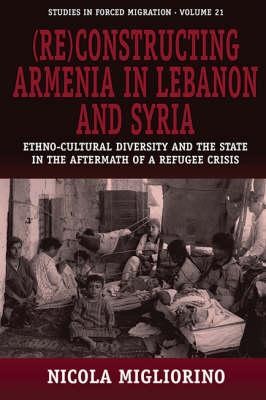
- We will send in 10–14 business days.
- Author: Nicola Migliorino
- Publisher: Berghahn Books
- Year: 2008
- Pages: 256
- ISBN-10: 1845453522
- ISBN-13: 9781845453527
- Format: 15.2 x 22.9 x 1.6 cm, kieti viršeliai
- Language: English
- SAVE -10% with code: EXTRA
Reviews
Description
For almost nine decades, since their mass-resettlement to the Levant in the wake of the Genocide and First World War, the Armenian communities of Lebanon and Syria appear to have successfully maintained a distinct identity as an ethno-culturally diverse group, in spite of representing a small non-Arab and Christian minority within a very different, mostly Arab and Muslim environment. The author shows that, while in Lebanon the state has facilitated the development of an extensive and effective system of Armenian ethno-cultural preservation, in Syria the emergence of centralizing, authoritarian regimes in the 1950s and 1960s has severely damaged the autonomy and cultural diversity of the Armenian community. Since 1970, the coming to power of the Asad family has contributed to a partial recovery of Armenian ethno-cultural diversity, as the community seems to have developed some form of tacit arrangement with the regime. In Lebanon, on the other hand, the Armenian community suffered the consequences of the recurrent breakdown of the consociational arrangement that regulates public life. In both cases the survival of Armenian cultural distinctiveness seems to be connected, rather incidentally, with the continuing 'search for legitimacy' of the state.
EXTRA 10 % discount with code: EXTRA
The promotion ends in 23d.10:29:33
The discount code is valid when purchasing from 10 €. Discounts do not stack.
- Author: Nicola Migliorino
- Publisher: Berghahn Books
- Year: 2008
- Pages: 256
- ISBN-10: 1845453522
- ISBN-13: 9781845453527
- Format: 15.2 x 22.9 x 1.6 cm, kieti viršeliai
- Language: English English
For almost nine decades, since their mass-resettlement to the Levant in the wake of the Genocide and First World War, the Armenian communities of Lebanon and Syria appear to have successfully maintained a distinct identity as an ethno-culturally diverse group, in spite of representing a small non-Arab and Christian minority within a very different, mostly Arab and Muslim environment. The author shows that, while in Lebanon the state has facilitated the development of an extensive and effective system of Armenian ethno-cultural preservation, in Syria the emergence of centralizing, authoritarian regimes in the 1950s and 1960s has severely damaged the autonomy and cultural diversity of the Armenian community. Since 1970, the coming to power of the Asad family has contributed to a partial recovery of Armenian ethno-cultural diversity, as the community seems to have developed some form of tacit arrangement with the regime. In Lebanon, on the other hand, the Armenian community suffered the consequences of the recurrent breakdown of the consociational arrangement that regulates public life. In both cases the survival of Armenian cultural distinctiveness seems to be connected, rather incidentally, with the continuing 'search for legitimacy' of the state.


Reviews